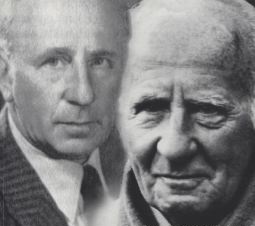ZEN MESTEREK ZEN MASTERS
« Zen főoldal
« vissza a Terebess Online nyitólapjára

Karlfried Graf Dürckheim (1896-1988)
Tartalom |
Contents |
[Wunderbare Katze und andere Zen-Texte]
[Japan und die Kultur der Stille] |
[Hara - Die Erdmitte des Menschen] PDF: Zen and Us PDF: The Way of Transformation: Daily Life as Spiritual Exercise PDF: Grace of Zen: Zen Texts for Meditation PDF: The Japanese Cult of Tranquility Ito Tenzaa Chuya (17. sz.) [sic]
|
![]() Karlfried Graf Dürckheim
Karlfried Graf Dürckheim
Wunderbare Katze und andere Zen-Texte
[Zeichn.: Klaus Bertelsmann]
München : Otto Wilhelm Barth Verlag, 1964, 122 S.
[Texte zu der Kunst des Schwertfechtens (Kendo), Bogenschießens (Kyudo) und Speerstoßens (Sojutsu). Eine erstmalig vollständige Beschreibung der Übung des Sitzens gibt uns das Fukan-Zazen-Gi von Dogen, das hier von Meister Hakuun Yasutani präzise kommentiert wird.]
PDF: Dr. Hetényi Ernő részleges fordítása:
A buddhizmus zen-aspektusa japán szövegek tükrében
Buddhista Misszió Dokumentáció, [Soksz.], Budapest, 1986, 56 oldalTartalom
ZEN 3
A TÚLFESZÍTETT ÍJ 4
A TÖKÉLETES KÖR 7
A GYAKORLAT LÉNYEGE: SATORI 10
A ZEN-SZÖVEGEK 12
Tora Sasamoto: A KÜZDELEM JOGA 13
KEN-ZEN EGYSÉG 24
A TAO A GYAKORLATBAN - Kenran Umeji íjászmester szövege 34
A CSODÁLATOS MACSKA - Ito Tenzaa zen-mester tanítása 38
FUKAN-ZAZEN-GI - Dogen zen-mester szövege, Hakuun Yasutani mester magyarázataival 44
![]() Hara: The Vital Center of Man
Hara: The Vital Center of Man
[Hara - Die Erdmitte des Menschen]
Translated by Sylvia-Monica von Kospoth
Table of Contents
Introduction
Part I—Hara in the Life of the Japanese
1 Hara in the Life of the Japanese
2 Hara in the Life of the Japanese
3 Hara as the Purpose of Practice
4 Hara in the Japanese LanguagePart II—Hara in its General Human Significance
1 Eastern and Western Views of Hara
(a) The General Significance of the Center of the Body
(b) The European Attitude to the Belly
(c) Natural Hara
(d) The Two LevelsPart III—Man With Hara
1 The Living Form Centered in Hara
2 The Ego and the Vital Center
3 Malformations of the I
4 Hara as Secular Power
5 Hara in Experience: Insight and Practice
6 The Strength, Breadth, and Closeness Engendered by Hara
7 The Order of Life in the Symbolism of the BodyPart IV—Hara as Practice
1 The Purpose and Prerequisite of All Practice
2 The Purpose and Limits of Practice
3 The Prerequisites of all Practice
4 Posture, Breath, Tension—as Starting Points of Practice
5 The Practice of Right Posture
6 Sitting with Hara
7 Tension-Relaxation
8 The Practice of BreathingPart V—Retrospect and Outlook
1 Retrospect and OutlookAppendix—Japanese Texts
1 Okado Torajiro
2 Sato Tsuji—The Teachings of the Human Body
3 Kaneko Shoseki—Nature and Origins of ManIndex
![]() Zen and Us
Zen and Us
Translated from the German by Vincent Nash
Published in Arkana 1991
Contents
PrefaceSTARTING POINTS
What Has Zen Got to Do with Us in the West?
The Light from the East?
What Zen Is Essentially About
Zen's Answer to the Problem of LivingWESTERN HUMANITY—ANGUISH AND AN END TO ANGUISH
SUFFERING AND PROMISE—THE SOURCES OF THE QUEST
THE SHACKLES OF OBJECTIVE CONSCIOUSNESS
What Objective Consciousness Is—Why It Is Dangerous The Pain of Living 24
Depersonalization of the Individual
The Decline of CommunityPORTENTS OF CHANGE
From Natural to Supernatural Experience
New Wine in Old Bottles
From Knowledge to InsightZEN'S ANSWER
THE SUBLIME MESSAGE OF ZEN
Everyone, in His True Nature, Is Buddha
The Experience of Being
The Experience of Being and Dualism
The Doctrine of Not-Two
Non-attachment to "Being"
The Opening of the Inner Eye
What Zen Looks Like in Practice
Passing on the MessageLIVING ZEN
Masters and Students
Heart to Heart
Stillness and Silence
The Discipline of Silence
ParadoxPRACTICING ZEN
The Meaning of Exercise
Dismantling the Ego
The Purpose of Technique
Zazen
The Three Stages of Consciousness and the Five Steps on the WayTHE TALE OF THE WONDERFUL ART OF A CAT
ZEN FOR THE WEST—WESTERN ZEN
![]() PDF: The Japanese Cult of Tranquility
PDF: The Japanese Cult of Tranquility
[Japan und die Kultur der Stille]
Translated from the German by Eda O'Shiel
London : Rider and Company, 1960, 106 p.
Contents
1 Tranquillity in the East and the West
Man's inborn knowledge of tranquillity
The Japanese cult of tranquillity
The concept of culture in Japan and in the West
The various approaches to tranquillity2 The nature of Japanese exercise
3 The basic exercises in tranquillityThe exercise in the immobility of the body
The exercise of the breath
The exercise of the centre of being4 How tranquillity stands the test of life
5 Objective tranquillity
6 Tranquillity in absorption
7 The ultimate test of tranquillity
8 ConclusionAddenda
Three Japanese texts:
I The Right to Fight-A Japanese story, related by Tera Sasamote
II The Identity of Ken-Zen--A text of the zen master Takuan, by Reibun Yuki, translated from the Japanese by Fumio Hashimoto, with amendments by Count Durckheim
III The Tao of Technique--A text of the Zen Master of Archery, Kenran Umeji, translated from the Japanese by Fumio Hahimoto, with amendments by Count DurckheimNotes Index